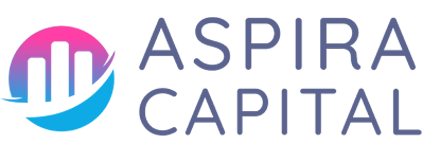Table of Contents
- Understanding Accounts Receivable
- The Importance of Cash Flow Optimization
- Effective Invoice Management Techniques
- Strategies for Encouraging Timely Payments
- Establishing Effective Credit Policies
- Defining Clear Payment Terms
- Collections Strategies That Work
- Monitoring Financial Health through Receivables Control
- Accounts Receivable in Small Business Finance
Understanding Accounts Receivable
Managing accounts receivable is pivotal for any business aiming to maximize cash flow. It entails the money owed to a company by its clients for goods or services that have been delivered but not yet paid for. Accurate management of these receivables ensures that a company maintains adequate cash flow, which is crucial for sustaining daily operations and funding growth initiatives.
The Importance of Cash Flow Optimization
Cash flow optimization means managing the income and expenses of a business to maximize available cash. Effective management of accounts receivable is a vital piece of this puzzle, as it can drastically reduce the cash conversion cycle.
Some key aspects include:
- Enhancing the speed of invoice processing.
- Implementing effective collection strategies.
- Improving client payment behavior.
For more insights on cash flow management, check this resource.
Effective Invoice Management Techniques
Smooth invoice management is essential to ensure timely payments and maintain healthy cash flow. Here are some effective techniques to consider:
- Automate Invoicing: Use invoicing software to automate the creation and sending of invoices, reducing the human error factor.
- Consistency: Stick to a consistent format and content for invoices, making it easier for clients to recognize and process them.
- Follow-Up Reminders: Set up automated reminders for invoices that are nearing or past their due dates.
Additionally, utilize cloud-based platforms, which can streamline invoice management and improve accessibility. Resources like FreshBooks can greatly facilitate these processes.
Strategies for Encouraging Timely Payments
Encouraging timely payments can significantly enhance your cash flow. Consider implementing these strategies:
- Early Payment Discounts: Offer incentives for clients who pay before the due date.
- Clear Communication: Communicate payment deadlines clearly on invoices and in contracts.
- Flexible Payment Options: Provide multiple payment methods to facilitate easier transactions for clients.
Research indicates that companies implementing such strategies can see a marked reduction in outstanding receivables.
Establishing Effective Credit Policies
Setting up clear and concise credit policies can play a crucial role in your overall accounts receivable strategy. Here are some elements to include:
- Credit Limits: Establish maximum amounts that each client can owe, which can limit exposure to bad debts.
- Credit Checks: Conduct background checks before extending credit to new clients.
- Regular Audits: Review and adjust credit terms based on client payment history and current financial health.
Learn more about effective credit policies through platforms like Business News Daily.
Defining Clear Payment Terms
The clarity of your payment terms plays an essential role in managing cash flow. Define the following:
- Payment deadlines (e.g., Net 30, Net 60).
- Late payment fees to encourage punctuality.
- Conditions under which credit terms may change or be revoked.
A well-articulated policy ensures that both parties understand their obligations, contributing to timely payments.
Collections Strategies That Work
Having an effective approach for handling late payments is crucial. Here are several proven collections strategies:
- Start Early: Begin follow-up communications before the actual due date to remind clients of upcoming payments.
- Maintain Professionalism: Always maintain a polite and professional tone in communications.
- Engage a Collections Agency: If necessary, employ a professional agency for persistent delinquencies, but weigh the costs against benefits.
For additional insights, refer to the guidelines from the Balance SMB.
Monitoring Financial Health through Receivables Control
Maintaining a robust system of receivables control is essential for assessing a company’s financial health. It is crucial to monitor accounts receivable aging reports regularly.
Key metrics to track include:
- Days Sales Outstanding (DSO): Monitor how long it takes on average to collect payments.
- Accounts Receivable Turnover: Measure how efficiently you are collecting receivables.
- Bad Debt Ratio: Analyze the percentage of receivables that are not expected to be collected.
Understanding these metrics provides insight into areas requiring improvement, thereby bolstering cash flow.
Accounts Receivable in Small Business Finance
For small businesses, managing accounts receivable effectively is often crucial for sustaining operations. Here are tailored strategies for small business finance:
- Utilize Technology: Leverage technological tools for automating invoicing and tracking overdue payments.
- Build Relationships: Establish strong relationships with clients to enhance trust and facilitate easier collections.
- Focus on Education: Educate your team on the importance of cash flow and strategies for improving collection processes.
Diving deeper into accounts receivable management can significantly improve a small business’s financial health and sustainability.

